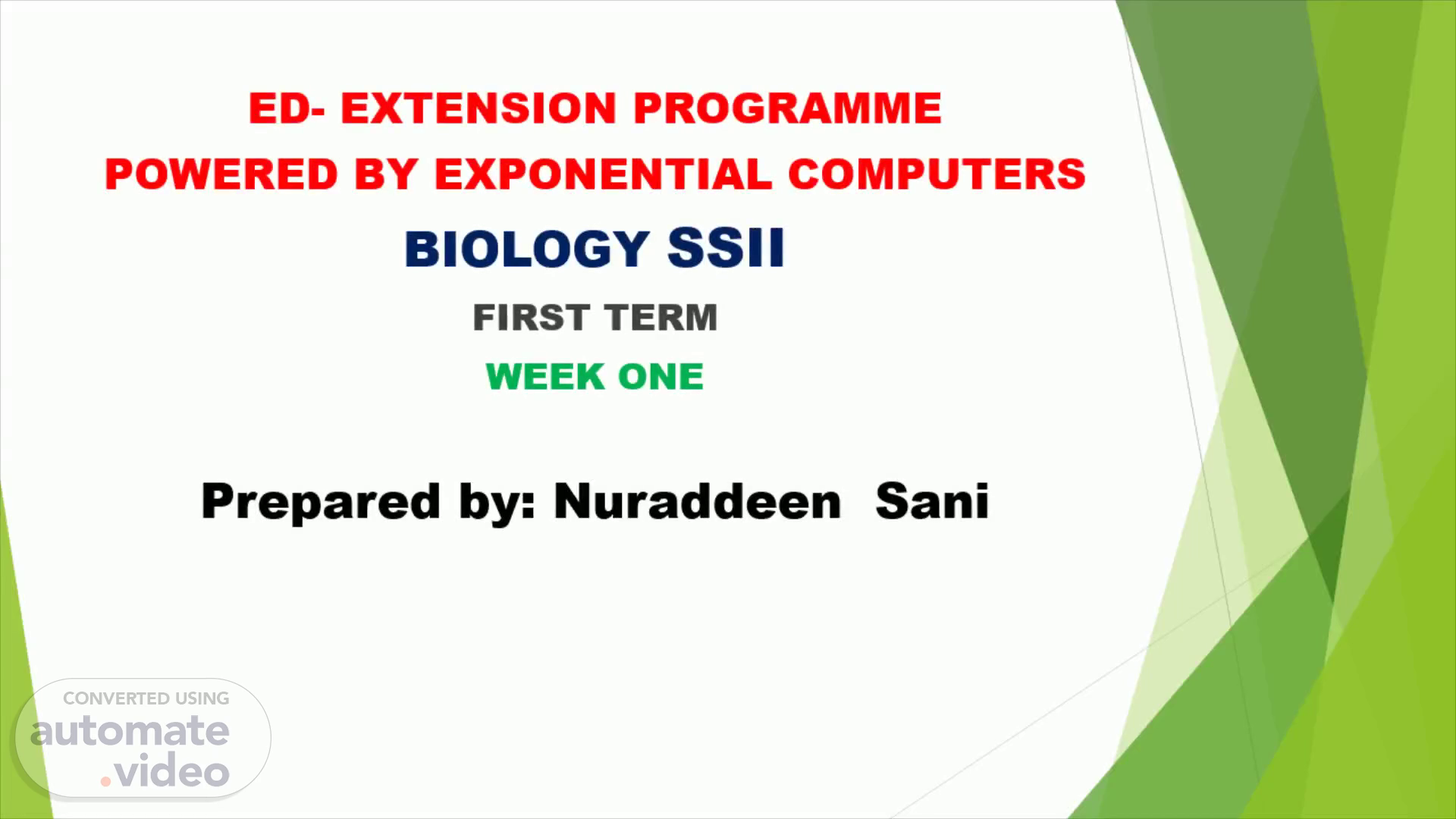
Page 1 (0s)
ED- EXTENSION PROGRAMME POWERED BY EXPONENTIAL COMPUTERS BIOLOGY SSII FIRST TERM WEEK ONE Prepared by: Nuraddeen Sani.
Page 2 (27s)
i'dfd?/inlå$. an Classification •a means of grouping plants according to their similarities.
Page 3 (1m 4s)
The bases on which plants are classified. Plants are classified using the following criteria: Base on physical characteristics ( botanical classification) .Flowering, and .Non-Flowering plants Base life cycle . Annuals plants . Biennials . Perennials Base on uses . Food, and . Non food crops.
Page 4 (2m 48s)
Plant Kingdom Norm-flowering Plants e Flowering Plants.
Page 5 (3m 5s)
5. Non - flowering Plants Thallo h a Bryophyta Pterido h ta Do NOT produce flowers.
Page 6 (3m 25s)
Thallophyta. These are the simplest organisms which had cell walls. Lack structures like roots, stems and leaves. They include bacteria, fungi and algae (Fig. 1.1) . The most renowned among these are mushrooms and nitrogen fixing bacteria. Many are notorious plant pathogens causing serious diseases of plants like rusts and smuts ..
Page 7 (6m 18s)
Bryophyta. These are mosses, liverworts and hornworts which lack true roots and flowers (Fig. 1.2). These species are ecologically very important in the tropics and forest ecosystems..
Page 8 (6m 51s)
Ptridophyta. These are higher plants having vascular systems. They also have true leaves, stems and roots. They do not have flower and no fruit formation Hence reproduce through spores. For example, ferns, club mosses, horsetails etc. (Fig. 1.3) are commonly found in tropics and forest ecosystems and they have agronomic use as ornamentals only..
Page 9 (8m 42s)
Non M osses - flowering Plants Ferns DO NOT produce flowers.
Page 10 (9m 32s)
Monocots. They have single cotyledon in their seed. Their germination is hypogeal. Most important cereals and fodders belong to this group. They have parallel venation on their leaves. They include wheat, rice, maize, barley, sorghum belonging to the family poaceae ..
Page 11 (13m 43s)
Dicots. They have two cotyledons in their seeds They are most advanced plants. Their germination is epigeal. The plants are broad leaved and have network venation. Many of them are economically important to man for either food, fiber or other purposes. They include soyabean, pulses, tobacco and cotton ..
Page 12 (16m 50s)
Monocots vs Dicots Summary Monocots One cotyledon Embryos Dicots Two cotyledons Veins usually parallel Leaf venation Veins usually Vascular bundles usually complexly arranged Stems Vascular bundles usually in ring Fibrous root system Roots Taproot usually present Floral parts usually in multiples of three Flowers Floral parts usually in multiples of four or five.
Page 13 (20m 46s)
Thank You For Listening. 13.